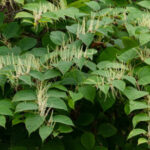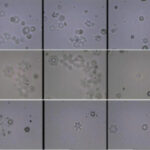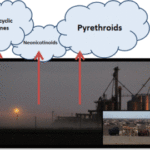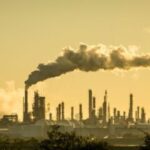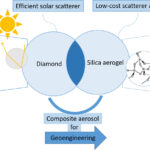January 11, 2025 Global Warming
The most cost effective way to offset anthropogenic global warming is to invest in greening urban centers.
CO2, the raw material of life
Every day, incompetent characters (who call themselves “scientists”) do nothing but bombard us with this false claim :
CO2 is a “polluting” substance.
I seriously doubt that the majority of the common people (totally uninformed about the facts) would accept this position if they understood that CO2 is actually a prerequisite for life, and that global food production will increase by trillions of dollars in the coming decades due to continuously increasing CO2 levels.
Even fewer would accept it if they understood that more than a century ago Svante Arrhenius, Nobel laureate and father of the greenhouse gas increase hypothesis, predicted that:
“Thanks to the influence of the increasing proportion of carbon dioxide [i.e. CO2] in the atmosphere, we can hope to experience epochs characterized by a more stable and comfortable climate, especially in the colder regions of the planet, epochs in which the earth will produce much more abundant harvests than at present, for the benefit of a rapidly expanding humanity”.
In other words, Arrhenius argued that humanity’s use of hydrocarbons and increasing CO2 concentrations in the troposphere would greatly benefit the planet.
The examples I will use to show that Arrhenius’ predictions were correct are :
The expansion of the plant kingdom
The acceleration of agricultural productivity
The climate-stabilizing effect of increased CO2
All these factors are due to what is commonly called the “CO2 fertilization effect“.
The CO2 fertilization effect in plants refers to the fact that the rate of photosynthesis and the efficiency of water use increase with the CO2 concentration in the environment.
As a result, the drought resistance of the plant kingdom naturally improves with increasing CO2 concentrations, and most plants will produce more foliage per mm of precipitation.
For this reason, commercial greenhouses artificially increase ambient CO2 concentrations by 3 to 4 times atmospheric concentrations.
Satellite remote sensing data have shown that from 1982 to 2015, the expansion of the plant kingdom was equivalent to the addition of more than 20 million square kilometers of leaf area, or twice the area of the United States.
Numerous studies have shown that boreal forests at higher latitudes and semi-arid desert ecosystems in the horse regions are where the plant kingdom has benefited the most.
The figure below shows how the area of vegetation in the Arctic has increased by 25-50% in this short period of time.
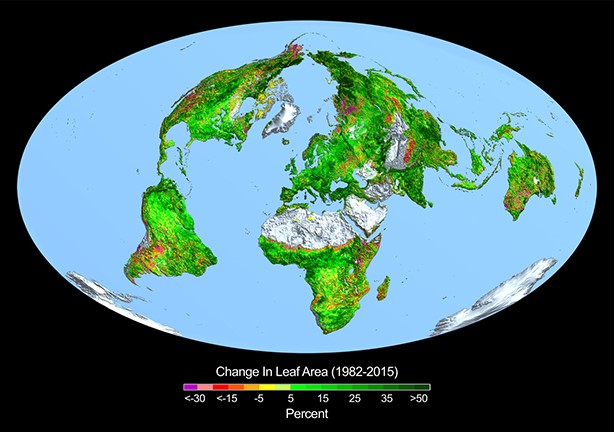
It should come as no surprise, then, that global agricultural productivity has steadily increased as atmospheric CO2 concentrations have risen.
The acceleration in global agricultural productivity due to projected increases in atmospheric concentrations between 2012 and 2050 is estimated to have an additional value of $10 trillion (in 2006 dollars) for increased production of 45 different grains, fruits, and vegetables.
Considering that current atmospheric concentrations are around 425 ppm and that the saturation limit of the CO2 fertilization effect in most plant species is between 1,100 and 1,300 ppm, it is reasonable to assume that humanity has only begun to realize this benefit in food production.
In addition to this caloric benefit, CO2 fertilization also has a climate-stabilizing effect that occurs with the accumulation of plant biomass and includes increased soil moisture retention, cloud seeding, and a higher rate of rainfall recycling.
In fact, several recent studies have estimated that the natural cooling effect of the plant kingdom limited global warming in the 1970s by about 0.5°C.
In contrast, numerous studies have also shown that the replacement of natural landscapes with urban infrastructure such as parking lots and high-rise buildings (the urban warming influence, or UHI) has a warming effect on air temperatures that can be detected at both regional and global scales.
In this sense, the UHI is a form of anthropogenic global warming, and ironically, the fertilizing effect of CO2 acts as an antidote.
So the next time someone argues that CO2 is a pollutant, remind him or her that Svante Arrhenius, Nobel laureate and father of the greenhouse gas increase hypothesis, also viewed human CO2 emissions as a benefit to Mother Earth.
Current atmospheric concentrations are three to four times lower than the saturation limit beyond which most plant species have evolved.
Any increase from current levels to this limit will promote the expansion of Earth’s plant kingdom, benefiting all life forms that depend on it.
The most cost-effective way to offset anthropogenic global warming is to invest in the greening of urban centers.



